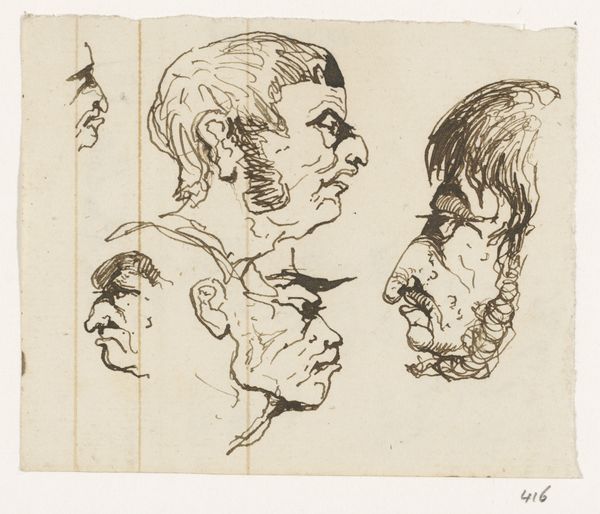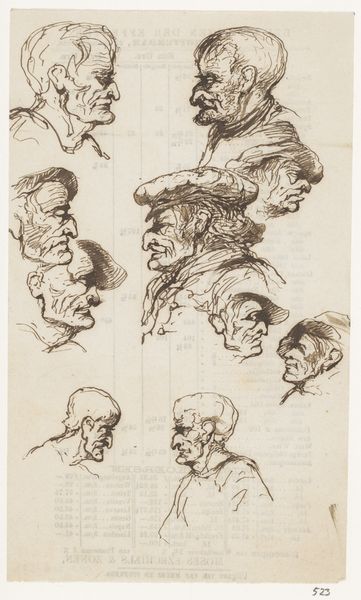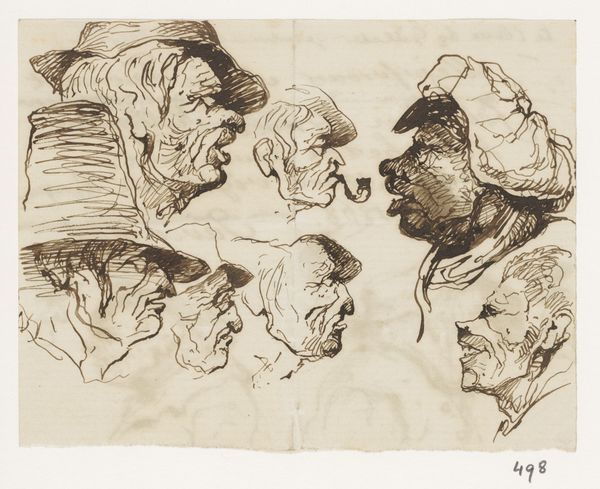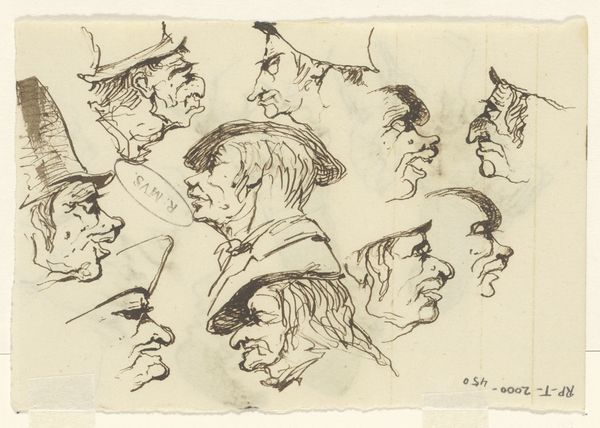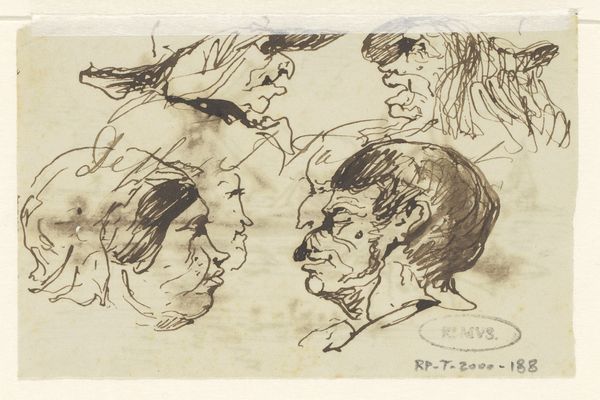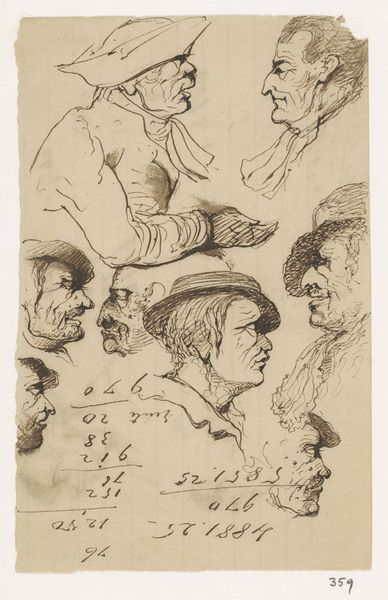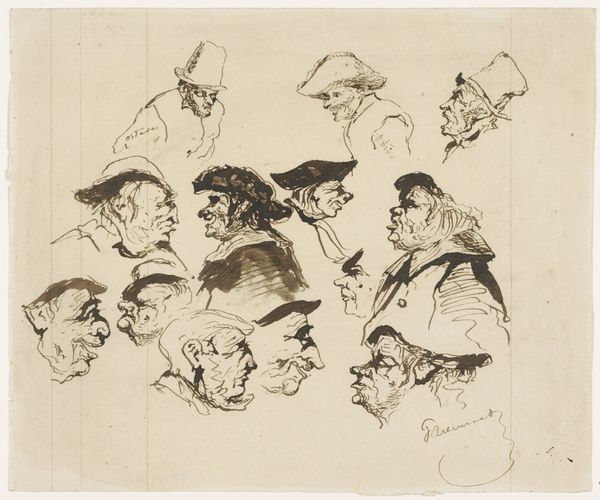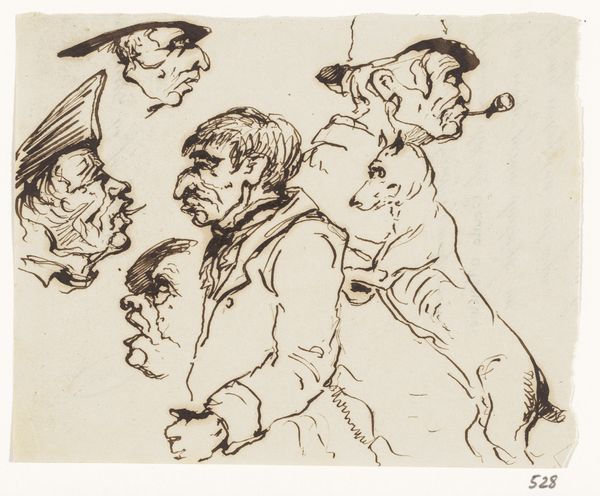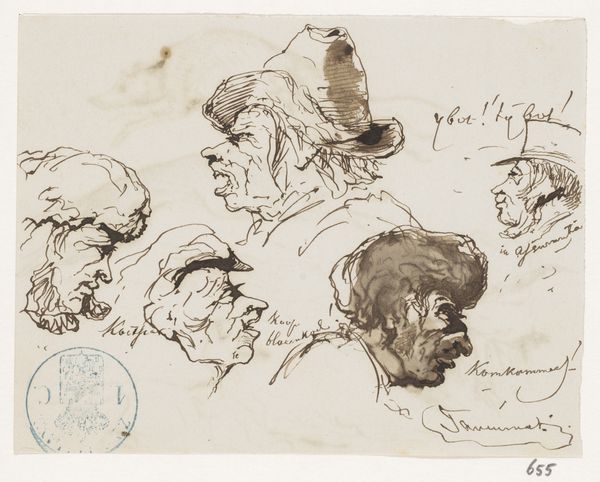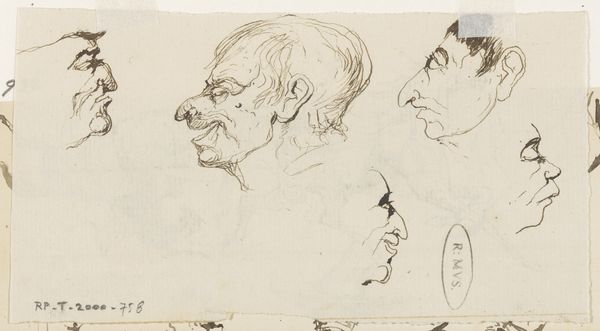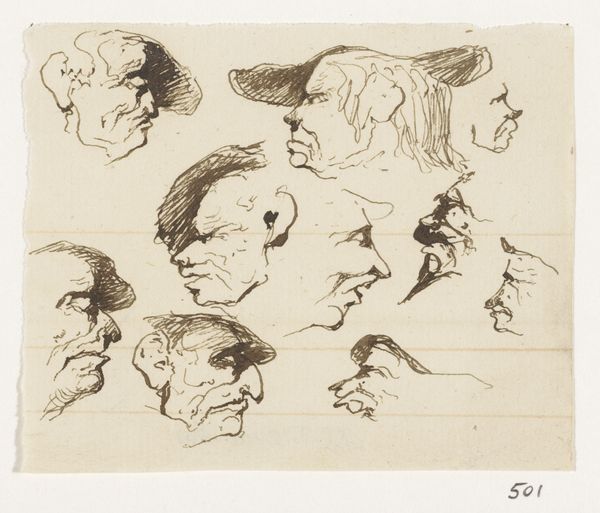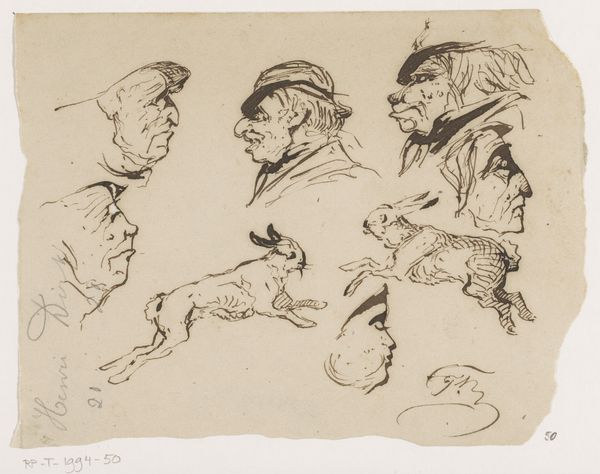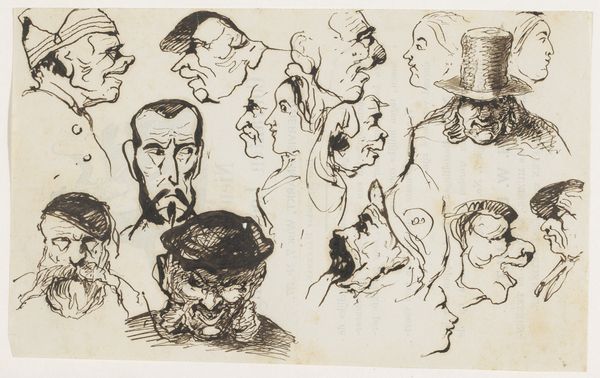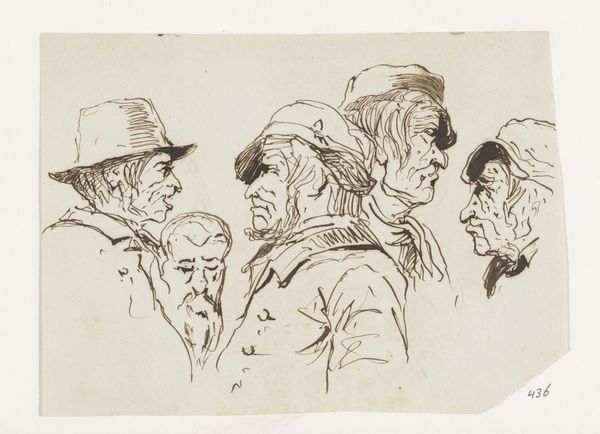
drawing, ink
#
portrait
#
drawing
#
pencil sketch
#
landscape
#
ink
#
portrait drawing
#
realism
Dimensions: height 108 mm, width 147 mm
Copyright: Rijks Museum: Open Domain
Editor: Here we have "Koppen en een haas," or "Heads and a Hare," a drawing made with ink and pencil by Johannes Tavenraat, sometime between 1840 and 1880. I’m struck by how informal this feels, like a page torn from a sketchbook. What stands out to you in this composition? Curator: The rapid, almost frenetic, application of line is paramount. Notice how Tavenraat uses hatching and cross-hatching not to define form in a traditional, volumetric sense, but rather to create a dynamic interplay of light and shadow, texture and void. Observe the tension created by the varied weights of the lines, a sophisticated interplay of dark and light, which, irrespective of representational skill, yields tonal effects. Editor: So, it's the relationship between the lines themselves, more than the figures they depict? Curator: Precisely. Consider how the orientation and direction of each stroke contributes to the overall dynamism. The hare, for instance, isn't simply rendered; it’s energized by the radiating lines implying motion. Look how it jumps. Further consider the positioning of these ‘heads’, where we read them in relation to one another in a matrixial ordering that defies spatial conventions. Editor: I see what you mean. The placement seems less about creating a realistic scene, and more about how each element interacts on the page itself. I find it's all more lively when observing line as energy and relation as opposed to static forms and shapes! Curator: Indeed. A formal analysis shifts our perception away from simple mimesis. The ink and pencil are media with intrinsic qualities: their capacity for texture, their responsiveness to pressure. Editor: So, understanding Tavenraat's technique reveals more about his artistic choices, and consequently informs the work’s visual character and meaning. Curator: It reveals a concentration on material essence and the act of mark-making, above all else.
Comments
No comments
Be the first to comment and join the conversation on the ultimate creative platform.
